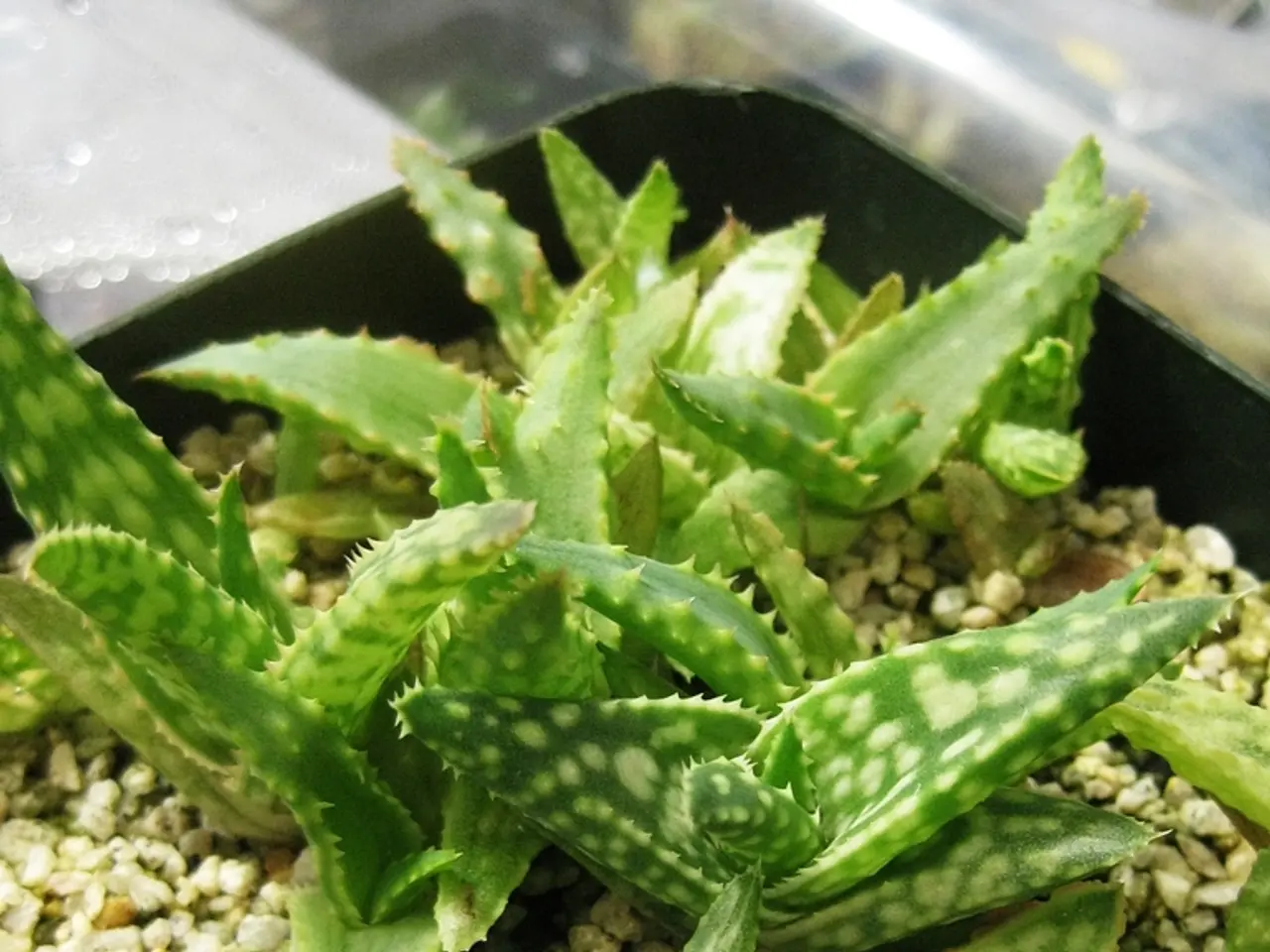Appearance and other indicators of anal cancer, including visuals
Lumps around the anus can be a cause for concern, but understanding the differences between anal cancer and common conditions like hemorrhoids can help alleviate anxiety. This article aims to provide a clear comparison between these two conditions.
Anal Cancer
Anal cancer typically appears as a hard lump or mass near the anus, sometimes accompanied by symptoms such as rectal bleeding, persistent pain or discomfort, severe itching, mucus or pus discharge, and changes in bowel habits like difficulty controlling movements or looser stools [1]. The lump from anal cancer often feels firm and may be alarming due to its persistence and associated symptoms.
In contrast to hemorrhoids, anal cancer lumps are usually hard and persistent. They may be accompanied by symptoms such as rectal bleeding, persistent pain, severe itching, and mucus or pus discharge. Anal cancer lumps are more concerning if they do not improve or are associated with systemic symptoms, so medical evaluation is essential to differentiate them from hemorrhoids and other benign causes [1][4].
Hemorrhoids
Hemorrhoids are swollen veins in the lower rectum or anus that usually present as soft or tender lumps, which can be internal (felt but not visible) or external (visible around the anus). They often cause pain, itching, swelling, and bright red bleeding during or after bowel movements [2][5]. External hemorrhoids might feel like small, tender bumps, while thrombosed hemorrhoids can be harder and very painful, but they typically resolve with lifestyle changes or treatment.
Key differences between anal cancer lumps and hemorrhoids include:
| Feature | Anal Cancer Lump | Hemorrhoid Lump | |-------------------------|------------------------------------------------|----------------------------------------------| | Consistency | Usually hard and persistent | Soft or tender, sometimes hard if thrombosed | | Appearance | Mass/growth possibly accompanied by discharge | Swollen vein, may be outside or inside anus | | Bleeding characteristics | Can bleed anytime, blood may be darker or tarry | Bleeding during/after bowel movements, bright red blood | | Associated symptoms | Persistent pain, severe itching, mucus/pus discharge, bowel habit changes | Pain especially during bowel movements, itching, swelling | | Duration | Does not resolve without treatment | Often resolves with care in days/weeks |
Other causes of lumps around the anus include cysts, abscesses, and skin tags, but these generally have different presentations and symptom profiles [5].
When to Seek Medical Attention
If you develop lumps around the anus area, particularly if rectal bleeding or changes in bowel habits also accompany them, it is crucial to contact a doctor. People should also contact a doctor if they experience any other symptoms of anal cancer, such as persistent pain, severe itching, mucus or pus discharge, or changes in bowel movements. The United Kingdom's National Health Service (NHS) notes that these lumps are usually small [4].
In summary, anal cancer lumps are typically firmer, persistent, and accompanied by more severe or systemic symptoms, whereas hemorrhoids are swollen blood vessels that usually cause tender, softer lumps with bleeding linked to bowel movements. Prompt medical examination is crucial when a lump near the anus is noticed to ensure accurate diagnosis and treatment.
[1] National Cancer Institute. (2021). Anal Cancer. https://www.cancer.gov/types/anal [2] Mayo Clinic. (2021). Hemorrhoids. https://www.mayoclinic.org/diseases-conditions/hemorrhoids/symptoms-causes/syc-20352277 [3] NHS. (2021). Hemorrhoids. https://www.nhs.uk/conditions/piles-haemorrhoids/ [4] NHS. (2021). Anal Cancer. https://www.nhs.uk/conditions/anal-cancer/ [5] Cleveland Clinic. (2021). Hemorrhoids. https://my.clevelandclinic.org/health/diseases/15807-hemorrhoids
- It's essential to understand the differences between anal cancer and medical conditions like hemorrhoids to alleviate anxiety about lumps around the anus.
- Science indicates that anal cancer lumps are harder and more persistent than hemorrhoid lumps, which are usually soft or tender and may be internal or external.
- Chronic diseases like anal cancer can be accompanied by severe symptoms such as rectal bleeding, persistent pain, severe itching, and mucus or pus discharge, unlike common conditions like hemorrhoids.
- Health and wellness practices, such as fitness and exercise, mental health management, skin care, nutrition, and the use of CBD products, can help maintain overall health and might aid in recovery from medical conditions like hemorrhoids.
- If you notice lumps around the anus, possibly accompanied by rectal bleeding, persistent pain, severe itching, or changes in bowel habits, it's crucial to seek medical attention promptly to ensure accurate diagnosis and treatment, as it could possibly indicate anal cancer.




